Review: Native Instruments and e-instruments Stradivari Violin
As the industry’s leading light of orchestral software, e-instruments has many strings to its bow. But this one, crafted via a legendary Stradivari violin, may just be its best.
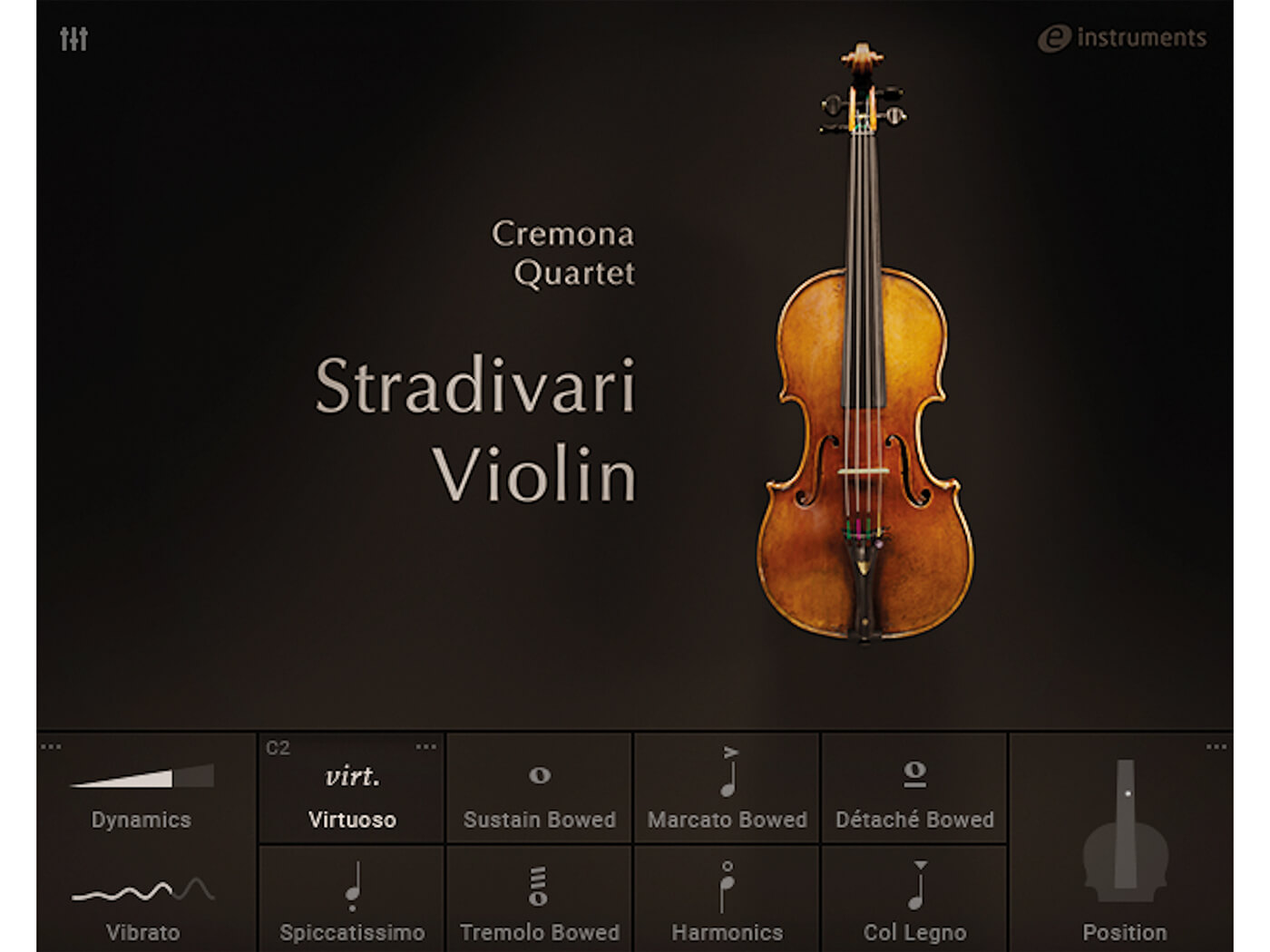

Price £180
Contact Native Instruments and e-instruments
As a master luthier, Antonio Stradivari created many types of stringed instrument. But it is for violins that he’s best known. These instruments represent the apogee for violinists, and command truly astonishing prices when changing hands. One example, created in 1721, was sold in 2011 for more than $15m – and you thought the TR-808 was pricey for an old bit of kit. Of the estimated 960 violins Stradivari produced, it’s believed that up to 512 are still in existence today, most of which are known by individual names. One such instrument, the Vesuvius, which Stradivari created in his later years, has now become the subject of a new sample library for use in Native Instruments Kontakt and Kontakt Player.
The drive to produce the Stradivari Violin library began with the Museo del Violino in Cremona, Italy, which sits at the heart of Europe’s 17th-century lutherie industry, and was the place where Antonio Stradivari was born, where he learnt his craft, and where he established his workshop. The museum wished to digitally preserve the priceless instruments in its collection, and make it available to contemporary musicians for use in their own creations. To this end, it partnered with Native Instruments, a company that knows a thing or two about sampling technology, and e-instruments, which knows a thing or two about sampling orchestral instruments, as seen in its stalwart Session Strings and Session Horns libraries.
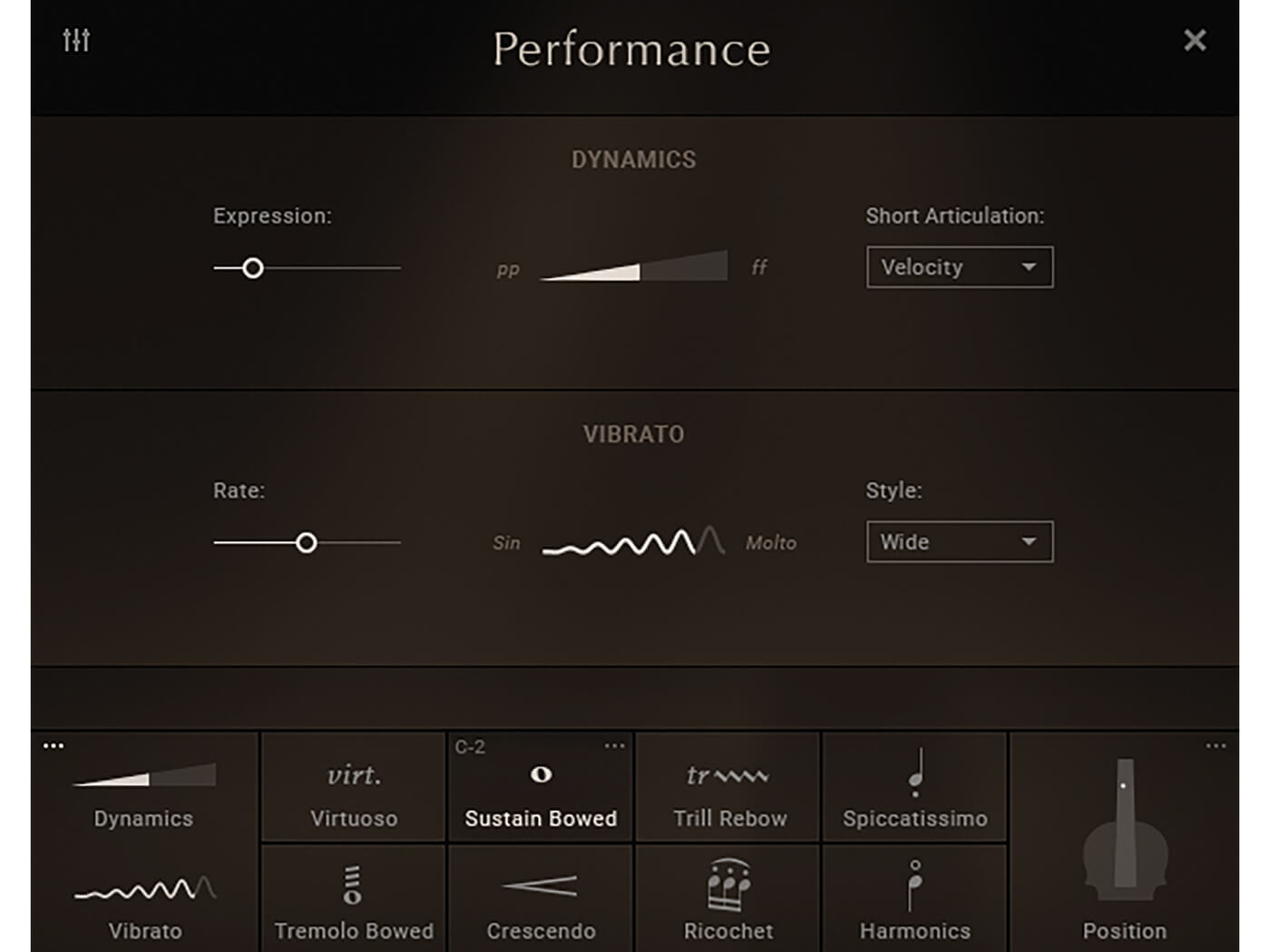
The real deal
The more than 20GB library of samples that make up Stradivari Violin were performed by master musicians, and recorded in the museum’s own acoustically rich concert hall, the Auditorium Giovanni Arvedi. There are many other beautiful-sounding halls that could have been used for this but knowing that the sampled instrument was created in the same place as the priceless original adds a certain authenticity that transcends purely sonic considerations.
Each of the Vesuvius’ strings was sampled chromatically, with 20 articulations of each note, including long and short notes, staccato, pizzicato, marcato styles, trills, up and down bowing, and so on. These recordings were then painstakingly edited, with e-instruments going so far as to phase-match the articulations so that changing between them sounds completely natural.
The samples have been built into a powerful and flexible engine that allows you to access the articulations in an easy, performance-centric manner. As with many NI instruments, some keys have been assigned to act as switches, and in Stradivari Violin these are used to switch between different scenes while you play. The scenes define the set of samples that are currently in use, and these are preloaded so there’s no stuttering when switching articulations.
The scenes also define various engine settings that impact the way the instrument responds to key and controller inputs. For example, with the adaptive Virtuoso scene enabled, notes don’t respond to key velocity, and you use the modulation wheel to control note volume instead. Conversely, scenes containing short articulations such as staccato and pizzicato respond to key velocity in the normal manner.
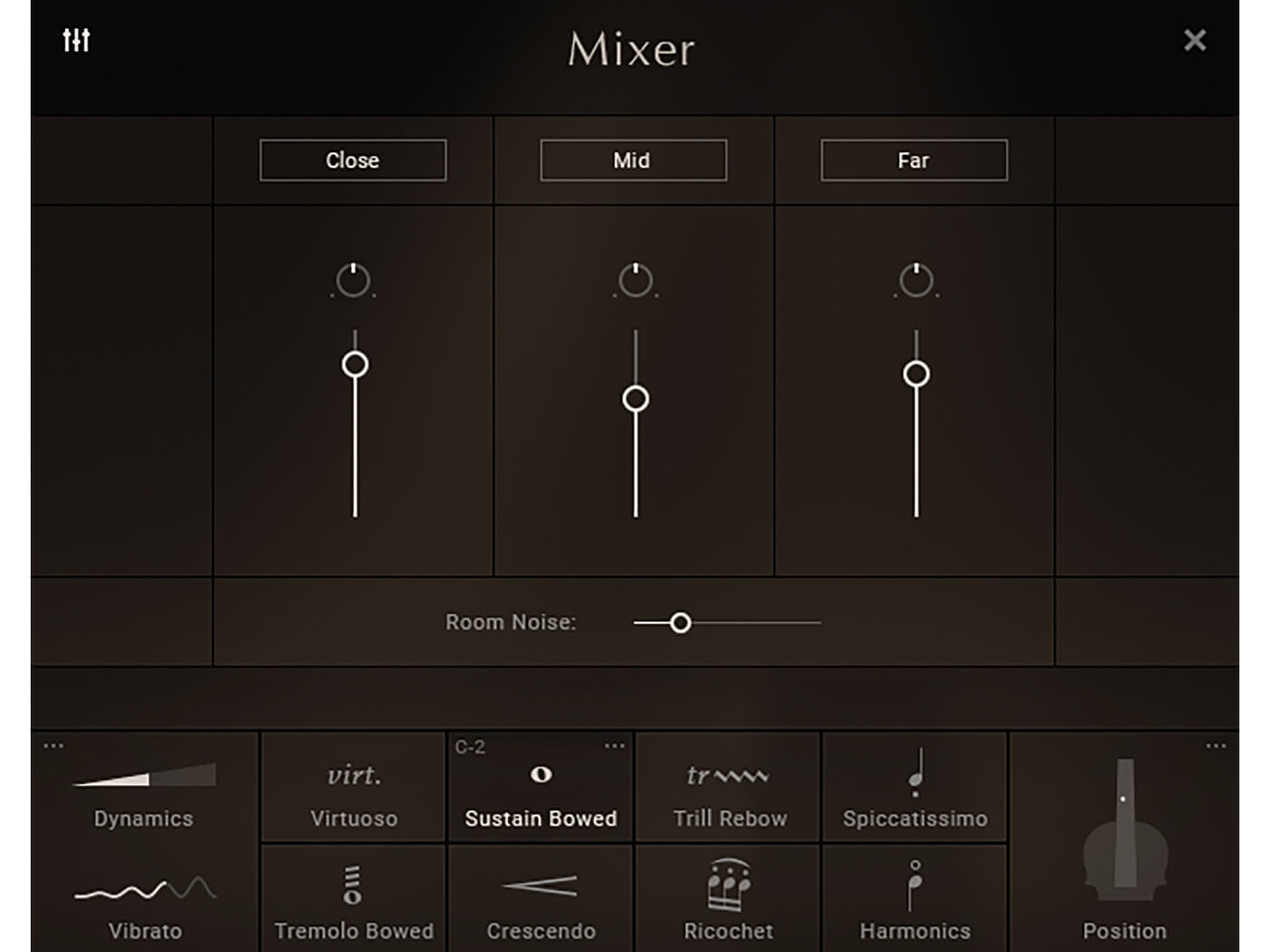
Get smart
Violins, like almost all stringed instruments, have the ability to produce the same notes in different positions on different strings, and part of a violinist’s skill is about knowing which particular fingering to use in any given situation. The string being played impacts the tone produced though, and to account for this, Stradivari Violin can be forced to choose the highest or lowest possible string for a note, or can use its own smart mode to figure out the best choice for itself. There’s also a momentary key switch that, when held down, will force the instrument to always use open-string samples whenever possible.
This mass of switches, articulations and engine responses can be a bit overwhelming – it’s almost too much choice for a single solo instrument. But it all starts to make sense as you learn to play the instrument, and it allows you to mimic the expressiveness of an acoustic violin performance in a way that feels surprisingly natural and playable.
Mic ’em up
Stradivari Violin was recorded via an array of 32 microphones set up in different locations in the auditorium. The standard NKI preset that comes with the library uses samples created from a mix of all of these mic sources but the library also includes a multi-mic preset. Here, the signals from the various mics have been mixed into three sets of samples, close, mid and far, and you can control the volume and panning of each using a mixer panel.
There are no artificial reverbs or other effects included in the instrument (although you could add some). The idea is that you would use the balance of the mic levels to control the sense of distance and space. The multi-mic preset even includes room-noise samples, and you can control the volume of these in the mixer too. This is bordering on overkill but is a reflection of the stupendous attention to detail that has gone into the making of this instrument.
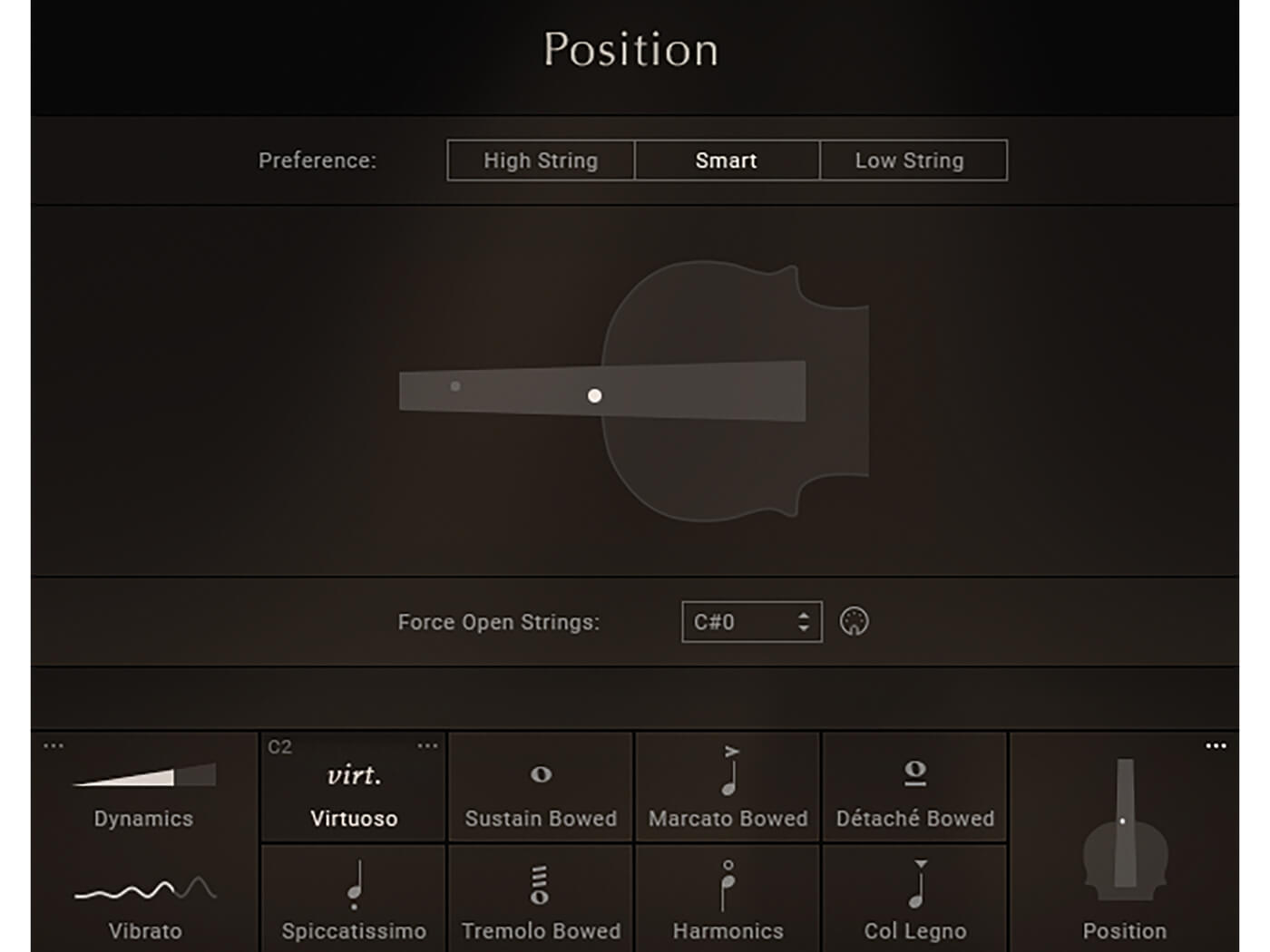
Playing the violin
Let’s forget for a moment the history and rarity of the Vesuvius violin from which the Stradavari Violin library was created, and think just in terms of it being a solo violin sample library. On these terms, the instrument can be said to produce an achingly accurate rendition of a solo violin, and this is in no small part down to the excellent engine that underpins the samples themselves. By exposing to simple keyboard control the breadth of performance techniques used by violinists, and linking this to such painstakingly prepared samples, NI and e-instruments have created a definitive example of how superlative a sampled solo violin can truly be.
But how important is it that the samples have been taken from a genuine Stradivari instrument? Our view is that it’s very important – but not for the reasons you might think. The sounds that have been captured are undoubtedly rich and detailed but we doubt there are many people who would be able to listen to those recordings and recognise they were hearing one of Stradivari’s masterpieces. The difference it has made, though, is to bring on board an institution whose entire raison d’être is to preserve without compromise the history and importance of the instruments that came out of Cremona’s golden age of lutherie. It’s possible that, without that influence, the two companies would not have been inspired to go to such great lengths to create a violin sample library of such exquisite quality.
Do I really need this?
It’s said that in every scientific analysis ever carried out on the sound produced by Stradivari’s violins, there has never been found a clear or obvious difference between it and the sound of any other high-quality hand-crafted instrument. Clearly, people wouldn’t pay millions to own a Stradivari if there wasn’t something unique about them. But a portion of that specialness is surely centred on the traceable history of many of the surviving instruments.
By being based on just such a historic instrument, Stradivari Violin succeeds in capturing a slice of that pedigree in a form that can be shared and enjoyed by anybody (indeed, the Vesuvius’s pedigree has been added to by being used as the basis of this library). But can the layperson tell the difference between this and another painstakingly sampled solo violin? Maybe. But perhaps to even ask the question is to miss the point.
Key features
- Exquisitely produced solo sample library
- Performed on the Stradivari Vesuvius violin
- Produced in collaboration with Museo del Violino in Cremona, Italy
- Recorded in the museum’s acoustically rich auditorium
- Multiple articulations
- Control mechanism allows expressive performances
- Multi-mic mode
Alternatives
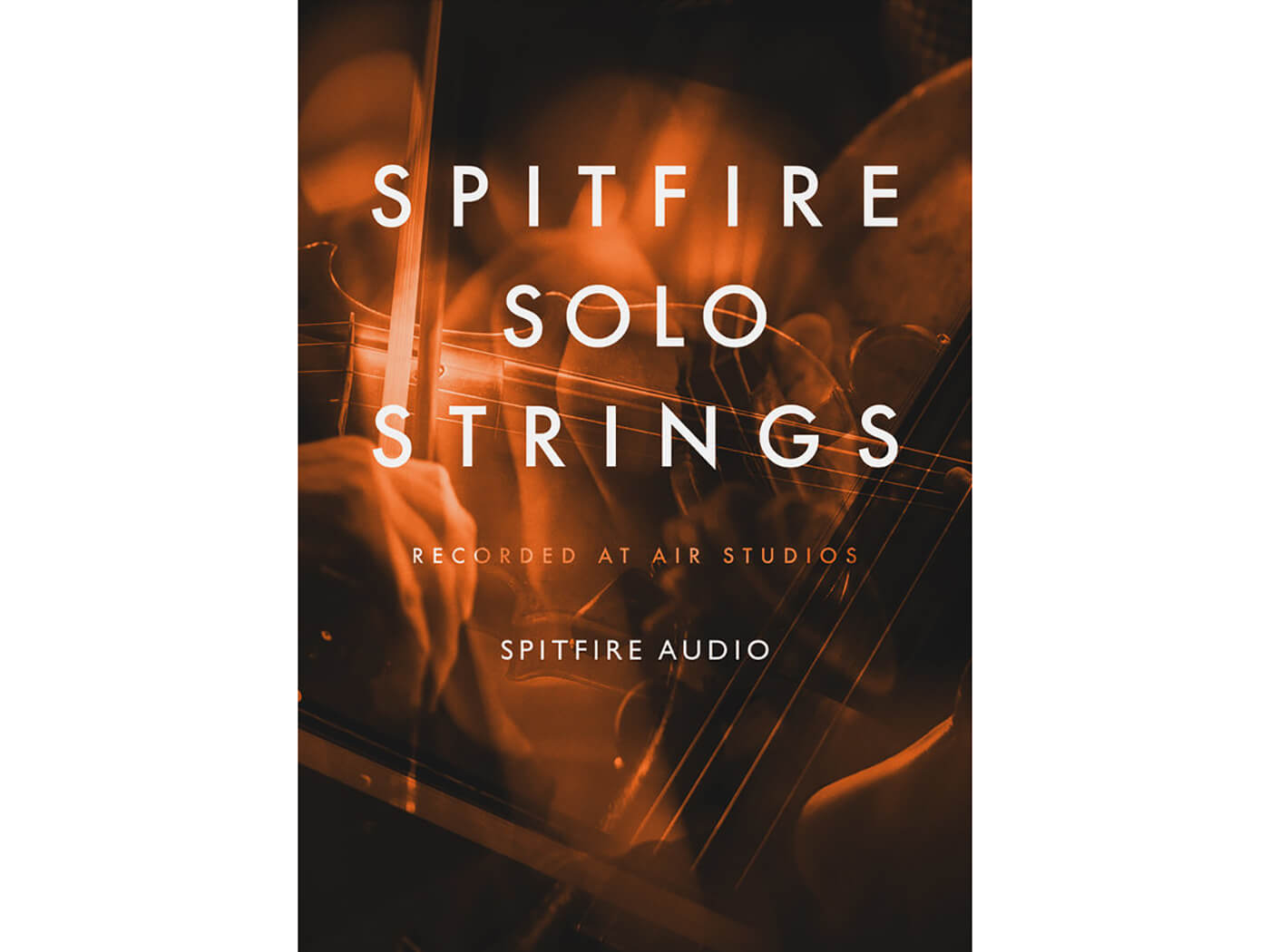
Spitfire Audio
Solo Strings £350
This Spitfire library captures the intimacy and detail of solo string instruments, including violins, violas and cellos, and provides the expressive control needed to bring the sampled instruments to life. The samples were recorded at The Hall at AIR Studios.
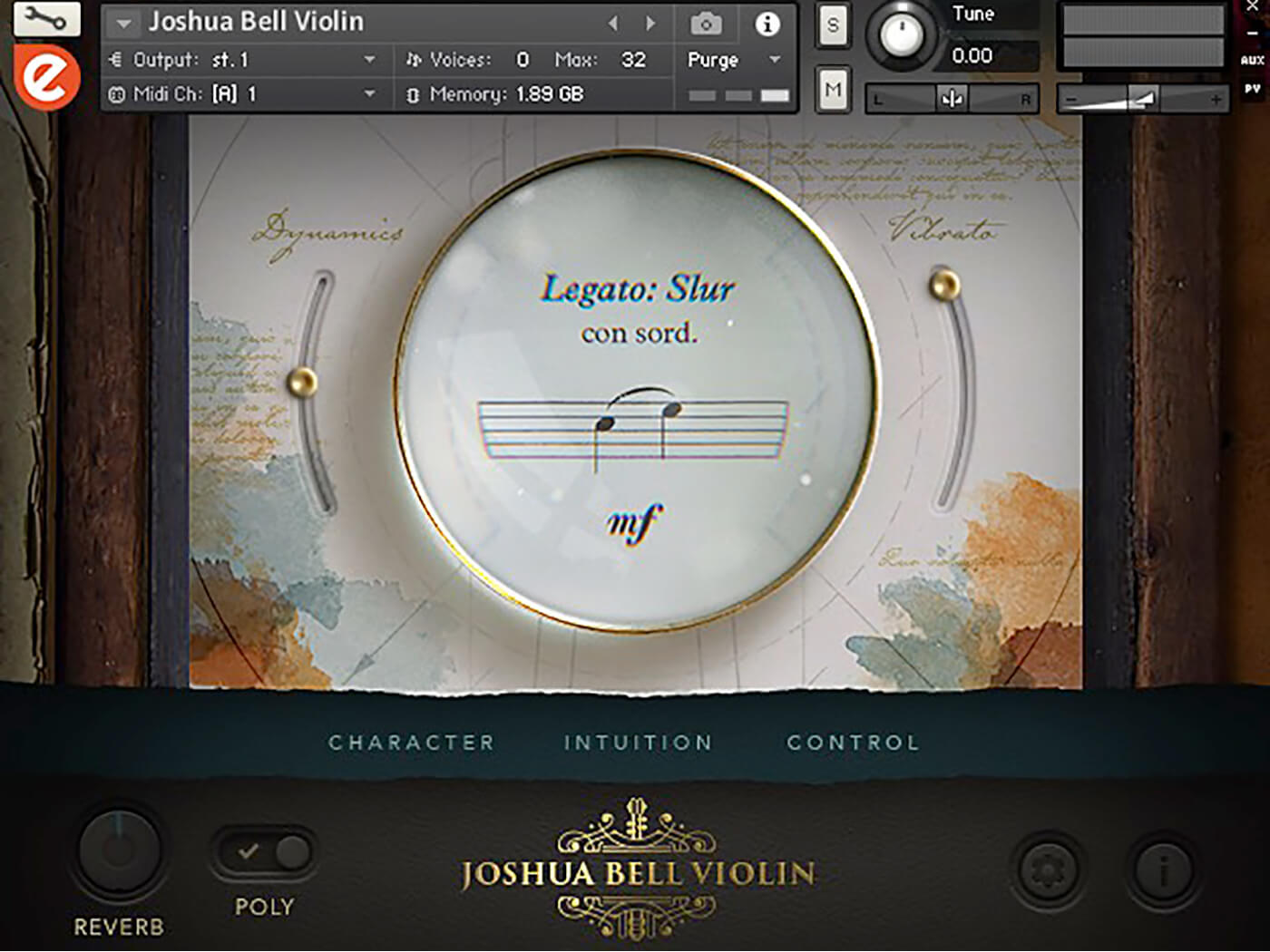
Embertone
Joshua Bell Violin £150
For this library, Embertone enlisted the services of Grammy-winning violinist Joshua Bell, who has featured on countless orchestral recordings and performed at some of the world’s most prestigious venues. He used his ‘Huberman’ Stradivari violin, created in 1713, for the recordings, which feature multiple articulations and intuitive expressive control.